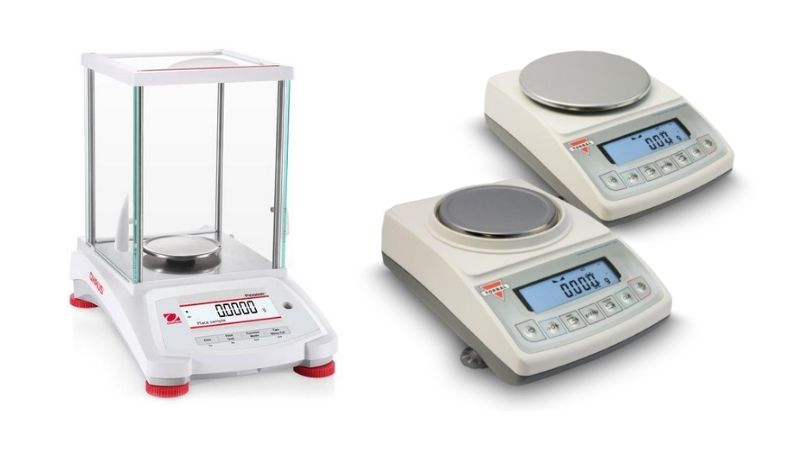Various types of equipment require calibration to ensure accuracy of readings and settings. For example, a lab balance needs to be calibrated regularly to ensure weight measurements are correct according to the accuracy expected of the balance. Overhead stirrers are calibrated to ensure speed settings are accurate, and fridges, freezers, and temperature chambers require calibration so that temperature settings are accurate.
While some calibration is conducted in-house, many laboratories are mandated or choose to have manufacturers or third-party service providers carry out calibrations for them. Once complete, each unit is issued a certificate of calibration.
In this post, we reveal what a certificate of calibration is and why it is necessary. We also look at who determines calibration protocols and how they may be carried out.
The Importance of Calibration
Calibration ensures that the readings on equipment are accurate as compared to certified standards. During the calibration process, a series of tests are performed, the nature of the tests depending on the type of equipment, the applications it is used for, and the desired level of accuracy.
Calibration is most commonly associated with measuring equipment such as scale, balances, and meters. However, any equipment that provides a reading, even if the equipment itself is not used to measure something, will need to be calibrated. Here are some examples of the types of equipment that need to be calibrated:
- Balances and scales (weight)
- Water baths (temperature)
- Lab incubators (temperature and CO2)
- Lab refrigerators and freezers (temperature)
- Stirrers (torque and speed)
- Orbital shakers (temperature and CO2)
- Lab centrifuge (speed and temperature)
A calibration certificate states the results of a calibration. The obvious purpose for a certificate of calibration is to confirm to the reader that the unit was indeed calibrated. It also provides details about when and by which laboratory the calibration was carried out, as well as the methods used and results derived. Certificates of calibration are required in many industries to conform to both internal and industry standards.
How Calibration Is Performed
Calibration consists of adjusting a piece of equipment such that readings and/or settings conform to a standard. There are usually special tools or instruments required to calibrate each piece of equipment. Here are a few examples:
- Calibration weights are used to calibrate a lab balance.
- Temperature sensors are often calibrated using a dry well.
- For accurate calibration of CO2 sensors, a tank of pure nitrogen is used.
Some calibration processes that do not require independent certification can be carried out in house. In fact, some pieces of equipment, such as certain scales and balances, are equipped with internal calibration functions.

In other cases, the manufacturer or a third-party service provider will calibrate the equipment. The nature of the calibration and the corresponding certificate will differ depending on who is carrying it out and what the requirements are for that specific piece of equipment. A manufacturer may perform a calibration to their own standards or to specific quality standards. A third-party tester will perform calibration to a specific set of quality standards.
Some applications may require that the calibration is performed, and a certificate provided, by a certified laboratory. This would be entirely dependent on the application and regulatory regime under which the user is operating.
ISO 17025 is an internationally-accepted general set of standards on which most specific standards are based. Calibration laboratories can be ISO 17025 accredited by various third-party accreditation organizations. The ILAC Mutual Recognition Agreement (ILAC MRA) provides international recognition for member accreditation bodies.
The National Institute of Standards and Technology (NIST) is a US-based National Metrology Institute (NMI) and is an agency of the US Department of Commerce. NIST publishes standards based on ISO 17025. These standards are commonly used by calibration laboratories in the US. NIST accredits US laboratories as well as the instruments and tools that are used as standards and certified measurement instruments. In addition, NIST itself offers calibration services.
You may come across the term “NIST-traceable standards.” As NIST explains: “Metrological traceability requires the establishment of an unbroken chain of calibrations to specified reference standards: typically national or international standards, in particular realizations of the measurement units of the International System of Units (SI).” Essentially, a NIST traceable calibration is one in which the calibrating laboratory can certify that the standards used are traceable to the SI via an unbroken chain of measurements.
In Europe, there are multiple NMIs, including PTB of Germany, NPL of the UK, and INRIM of Italy, all of which produce standards complying with ISO 17025. EURAMET forms a collaborative alliance of many EU NMIs and has published a harmonized set of calibration standards.
OEM vs Third-Party
Wondering if you should go to the OEM or a third-party testing laboratory? There are a couple of considerations here. The OEM clearly knows the unit best. However, you will sometimes (but not always) find that turnaround is slower with a manufacturer. Their priorities are typically focused in other areas whereas as a third-party calibrator is focused on calibration services.
Another consideration is that some third parties can send personnel on-site to perform calibrations. This can reduce turnaround time and reduce the risk of damage to equipment or risk to calibration accuracy in transit. There may also be a price difference to consider.
